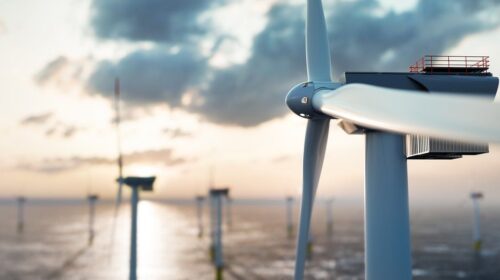With 17 new wind farm projects planned for Scotland, the UK’s offshore wind power capacity is set to more than double.
But what happens when the wind is blowing, the turbines are cranking out electricity and there’s no demand for it?
It’s already a problem. In 2020, enough electricity to supply more than one million homes was wasted due to a lack of storage, according to a report by KPMG that was commissioned by the power company Drax. But one firm, which won a 2022 Best of Innovation award at the CES technology show earlier this year, believes it has the solution. Dutch startup, Ocean Grazer, has developed the Ocean Battery, which stores energy below the wind farm.
When there is excess electricity the system pumps water from an underground reservoir into tough, flexible bladders that sit on the sea bed. You could think of them like big bicycle inner tubes.
The water in those tubes is under pressure, so when it is released the water flows quickly and is directed through turbines, also on the sea bed, generating electricity when needed.
“The Ocean Battery, is effectively based on the same technology as hydro storage, where water is pumped back through a dam in a river, though we have transformed it into something you can deploy on the sea bed,” says chief executive Frits Bliek.
A protoype designed for deep water has already been tested at the port of Groningen in the Netherlands. The firm is now preparing to test a second system that has been modified for shallower water in a lake in the northern Netherlands. This should be operational next year.
Many on-shore wind farms already use batteries to store extra power but there are a number of problems when it comes to using these offshore.
“If you want to build a large-scale system offshore, you would also need to build a really huge platform built of sea containers and that’s been found to be very, very costly. Also the lifetime of the batteries is not very long,” says Mr Bliek.
While lithium-ion batteries can last for 5,000-10,000 charging cycles, the Ocean Battery can take up to a million, he says. Though the cost of storage is roughly the same, this extended life makes it much cheaper overall.
“We found it can be built in shallow waters everywhere where wind farms are being built, and that’s also pretty cost-effective at the end of the day,” says Mr Bliek.





